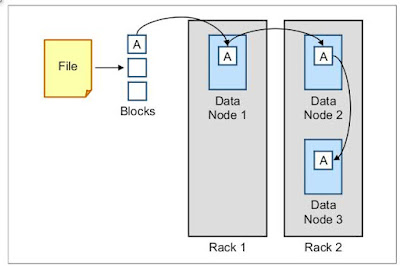Using Agentic AI to Handle Unstructured Data in Big Data Systems
Introduction
In today’s data-driven world, the majority of enterprise data is unstructured—ranging from emails, social media posts, videos, audio files, IoT sensor streams, to customer feedback. Unlike structured data, which fits neatly into databases and tables, unstructured data lacks a predefined model, making it harder to analyze using traditional methods. Big data systems must therefore evolve beyond storage and retrieval to intelligent interpretation. Agentic AI—a new paradigm of artificial intelligence where autonomous, goal-directed AI agents manage complex workflows—emerges as a powerful solution for handling unstructured data effectively.
The Challenge of Unstructured Data in Big Data Ecosystems
Organizations generate massive volumes of unstructured data daily, but only a small fraction is analyzed for insights. Key challenges include:
-
Volume and Velocity: The continuous influx of large-scale data streams from diverse sources.
-
Variety: Different data formats (text, audio, video, images, logs, etc.) complicate processing.
-
Veracity: High levels of noise, ambiguity, and inconsistency reduce data quality.
-
Value Extraction: Traditional analytics tools are limited in extracting meaningful insights.
These barriers slow decision-making, reduce innovation, and lead to missed business opportunities.
What Makes Agentic AI Different?
Agentic AI differs from conventional machine learning or analytics platforms by leveraging autonomous agents that can:
-
Ingest and Classify Data Dynamically: Agents automatically detect the type and format of unstructured data.
-
Orchestrate Multi-Stage Processing: They coordinate pipelines for natural language processing (NLP), computer vision, or speech-to-text as required.
-
Adapt to Context: By reasoning over goals, they adjust workflows for industry-specific use cases (e.g., healthcare imaging vs. financial text analysis).
-
Learn Continuously: Agents update their models through reinforcement and feedback loops, improving accuracy over time.
-
Collaborate at Scale: Multiple AI agents can work in parallel, distributing workloads across big data systems.
Techniques for Handling Unstructured Data with Agentic AI
-
Text Analysis with NLP Agents:
-
Automatically extract sentiment, entities, keywords, and intent from textual data such as social media or support tickets.
-
Summarize lengthy documents into concise insights.
-
-
Image and Video Processing with Vision Agents:
-
Detect objects, anomalies, or patterns in surveillance footage, medical scans, or product quality checks.
-
Automate tagging and cataloging of digital assets.
-
-
Audio and Speech Interpretation:
-
Convert spoken language into structured transcripts for analysis.
-
Detect emotion, tone, or compliance in call center interactions.
-
-
Semantic Understanding and Knowledge Graphs:
-
Agents map unstructured content into interconnected knowledge graphs.
-
This enables search, recommendation, and advanced analytics across large datasets.
-
-
Automated Data Governance:
-
Ensure data quality, remove duplicates, and classify sensitive information.
-
Apply compliance rules dynamically (e.g., GDPR or HIPAA).
-
Applications Across Industries
-
Healthcare: Analyze medical images, patient notes, and genomic sequences for faster diagnosis.
-
Finance: Detect fraud patterns in transaction logs and analyze customer communications.
-
Retail: Extract sentiment from customer reviews and personalize recommendations.
-
Manufacturing: Process sensor logs, video feeds, and maintenance records for predictive maintenance.
-
Government & Security: Monitor social media for public sentiment, threats, or crisis response.
Benefits of Agentic AI in Big Data Systems
-
Scalability: Handles petabytes of heterogeneous data seamlessly.
-
Accuracy: Context-driven decision-making reduces errors in data interpretation.
-
Efficiency: Automates repetitive tasks, freeing human experts for strategic roles.
-
Real-Time Insights: Enables faster decision-making from continuous data streams.
-
Cost Savings: Optimizes storage and processing resources by classifying and filtering data intelligently.
Future Outlook
As unstructured data continues to grow exponentially, Agentic AI will play a central role in bridging the gap between raw information and actionable intelligence. Future advancements may include cross-agent collaboration, integration with quantum computing for faster processing, and enhanced ethical frameworks to ensure responsible AI use. Organizations that invest early in agentic AI-driven unstructured data management will gain a competitive advantage in innovation, customer engagement, and operational excellence.
Conclusion
Unstructured data is both a challenge and an opportunity in big data systems. With Agentic AI, enterprises can unlock the hidden potential of messy, complex data to derive actionable insights, enhance efficiency, and maintain agility in a dynamic business environment. By embracing autonomous AI agents, organizations transform unstructured data from a burden into a strategic asset.




Comments
Post a Comment